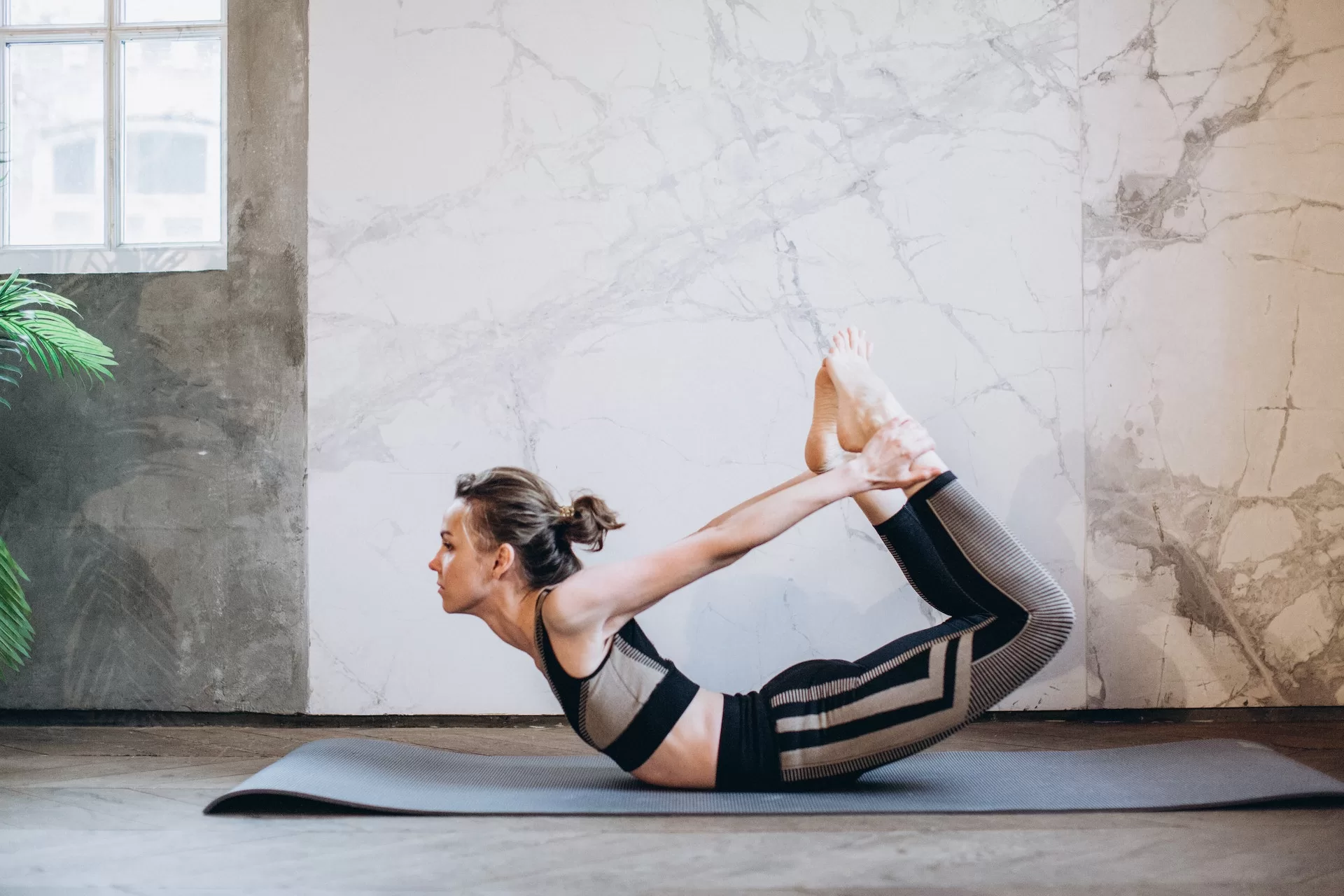Introduction
Dhanurasana, or Bow Pose as it is more commonly known, is one of the most powerful, dynamic poses in the yogic tradition. For the expert yogi who is looking to take their practice to the next level and explore the many dimensions of their practice, Dhanurasana is an invaluable pose.
To many of us, this pose may look very difficult and intimidating, but if one takes the necessary time to understand the details and nuances of the pose, as well as progress gradually, it can be learned successfully.
With patience and dedication, anyone can learn this challenging asana.
The name Dhanurasana comes from the Sanskrit words Dhanur (‘bow’) and Asana (‘pose’).
Physical Benefits
Physical Benefits of the Bow Pose The Bow Pose provides numerous physical benefits that, when capitalized on, can help to alleviate some chronic ailments that have been caused by sedentary lifestyles. The entire spine, from the lower all the way up to the neck, experiences a deep stretch that increases cardiovascular responses, promotes respiratory efficiency and helps to improve posture. Additionally, compression of the abdominal organs helps to improve the digestive system. Because the main focus of the Bow Pose is the back, this ensures that the muscles, ligaments and tendons become strong and resilient.
The Spiritual Benefits of the Bow Pose
Although physical benefits may be the more obvious of the two, the spiritual benefits of the Bow Pose can also be profound when practiced correctly.
By helping to focus the mind on the metaphysical world, one is able to access deeper levels of self-awareness and can also bring a sense of peace and harmony by helping to make the practitioner more aware of the interconnectedness of everything. Through this understanding, a greater appreciation for life develops that can help to reduce fatigue and mental stress, among many other emotional and psychological disorders.
Breath Control in the Bow Pose
When practicing the Bow Pose, breath control is highly important, as the correct pattern of inhalation and exhalation can help to enhance the effects of the posture.
On inhalation, attention should be paid to engaging the abdomen slowly and evenly, and when moving into the Bow Pose, the breath should return to a steady pattern of long and deep inhalations and exhalations to remain connected with the posture.
Taking time for a few moments in between breaths can also help to attain a greater sense of awareness, leading to a calmer and more rewarding practice.
Variations of the Bow Pose
There are a few variations of the Bow Pose, tailored to those seeking different forms of challenge in their practice.
The first variation is known as the Modified Bow Pose, and is ideal for beginners or those with back issues as it helps to reduce the strain on the lower spine. In this variation, hands are kept on the floor while attempting to lift the feet, shins and thighs off of the ground.
The second and more challenging variation of the Bow Pose is the Archer’s Bow Pose, in which the hands are used to hold onto both ankles, and the entire pose is created by arching the entire upper torso up and back. This variation is challenging as it requires ample strength in the arms and shoulders, and is usually practiced by advanced yogis.
Conclusion
The Bow Pose is a challenging asana that can be practiced by yogis of all levels. Its physical and spiritual benefits are many and should be taken advantage of for greater health, wellness and enlightenment. With consistent effort, proper breath control and dedication, one can tap into deeper realms of awareness and experience a greater connection with the spiritual world.

